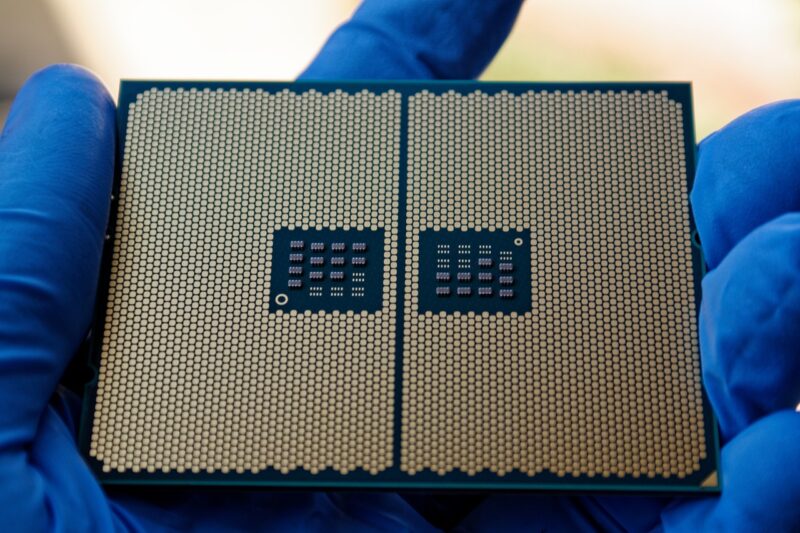
In recent years, AMD has made significant strides in the semiconductor industry, particularly in the realm of consumer desktop processors. AMD’s Ryzen series has transformed the competitive landscape, challenging Intel’s longtime dominance with a compelling mix of performance, affordability, and energy efficiency. In this article, we’ll delve into the reasons behind AMD Ryzen processors gaining popularity, examining their advantages, architectural innovations, and strategic marketing efforts that have turned the tide in favor of AMD.
—
1. A Brief History of AMD and Intel
Despite being a historical rival, AMD has often trailed Intel in market share and performance for decades. Intel’s processors were the go-to choice for gamers, content creators, and general users alike. However, the landscape began to change with the launch of AMD’s Ryzen processors in 2017. Ryzen marked a turning point for the company, featuring a new microarchitecture called Zen which brought unprecedented capabilities and performance per watt.
The competitive momentum shifted with every subsequent Ryzen generation, from the first generation to the latest Ryzen 7 and Ryzen 9 processors of 2023, which continue to challenge everything that Intel has to offer.
—
2. Performance to Price Ratio
One of the most compelling reasons consumers are gravitating towards AMD Ryzen processors is their unmatched performance-to-price ratio. For a long time, Intel’s processors were known for their high prices. AMD, on the other hand, has managed to produce processors that deliver comparable, and often superior, gaming and productivity performance at lower price points.
In various performance benchmarks, AMD’s Ryzen CPUs have shown remarkable performance in multi-threaded tasks due to their higher core and thread counts, making them ideal for multi-tasking and content creation. Moreover, the cost savings allow users to invest more in other components of their PCs, such as higher-end GPUs or larger SSDs, further enhancing their overall computing experience.
—
3. Enhanced Core and Thread Counts
Modern CPUs are expected to marry performance with efficiency, and AMD has excelled at delivering high core and thread counts across its Ryzen lineup. For example, even the mid-range Ryzen 5 processors typically feature six cores and twelve threads, while the high-end Ryzen 9 processors can offer up to sixteen cores and thirty-two threads.
In contrast, Intel’s comparable offering often falls short in terms of multi-threading capabilities, especially in mid-tier offerings. As a result, users engaged in competitive gaming, video editing, and 3D rendering are finding Ryzen processors increasingly attractive.
—
4. Energy Efficiency and Thermal Management
AMD has made significant advances in energy efficiency with its latest Zen architecture. Ryzen processors are built on a 7nm process node, which allows them to deliver high performance without excessive power consumption. Not only does this lead to lower electricity bills, but it also enhances thermal management, allowing for quieter cooling solutions in PC builds.
This contrasts sharply with many of Intel’s older architectures, which often ran hotter and required more power. Enhanced thermal design means less throttling under heavy workloads for Ryzen CPUs, providing more stable and reliable performance over extended periods.
—
5. Innovation in Integrated Graphics
AMD’s Ryzen processors come equipped with integrated graphics on select models, particularly the Ryzen G-series. The Ryzen 5 5600G, for instance, features AMD’s Vega graphics technology, which offers decent gaming performance without the need for a discrete GPU. This is particularly important for budget-conscious users who may not wish to invest heavily in a graphics card upfront.
Intel also has integrated graphics in their CPUs, but they have historically lagged behind AMD’s offerings, especially in high-performance scenarios. With the rise of gaming and the increasing popularity of streamed gaming platforms, integrated graphics have become more vital for many consumers looking to balance performance with cost.
—
6. Compatibility with Older Motherboards and Future-proofing
AMD has adopted a more consumer-friendly approach when it comes to chipset compatibility. Many Ryzen processors use the AM4 socket, allowing users to upgrade their processors without the need to buy a new motherboard frequently. This offers a degree of future-proofing for consumers, who can upgrade their systems bit by bit over time.
Intel, conversely, has traditionally employed more frequent changes in socket and chipset architecture, which can force users to purchase new motherboards for even minor CPU upgrades. This approach often leads to frustration among consumers who want to keep their systems current without incurring excessive expenses.
—
7. Strong Marketing Strategies and Community Engagement
AMD’s resurgence in the market is also attributed to an effective marketing strategy. The company has actively engaged with the gaming and tech communities through partnerships, sponsorships, and strategic affiliations with popular gaming influencers and content creators. Their efforts to showcase performance benchmarks explicitly compare their offerings to Intel’s, effectively positioning themselves as a reasonable and attractive alternative.
This, combined with a strong presence in the gaming market, particularly in esports, has allowed AMD to penetrate demographics that may have primarily identified with Intel in the past.
—
Conclusion
In conclusion, AMD’s Ryzen processors have gained significant popularity over Intel due to a combination of competitive pricing, superior performance, innovative architectures, and stellar marketing strategies. As consumers continue to seek out processors that deliver high performance without breaking the bank, AMD’s momentum is expected to continue into the future.
As the tech landscape evolves, the rivalry between AMD and Intel will no doubt pave the way for more exciting innovations, ensuring better options for consumers moving forward. For anyone looking to build or upgrade their PC, it is crucial to consider AMD’s impressive offerings — it seems that Ryzen processors are here to stay.
—








